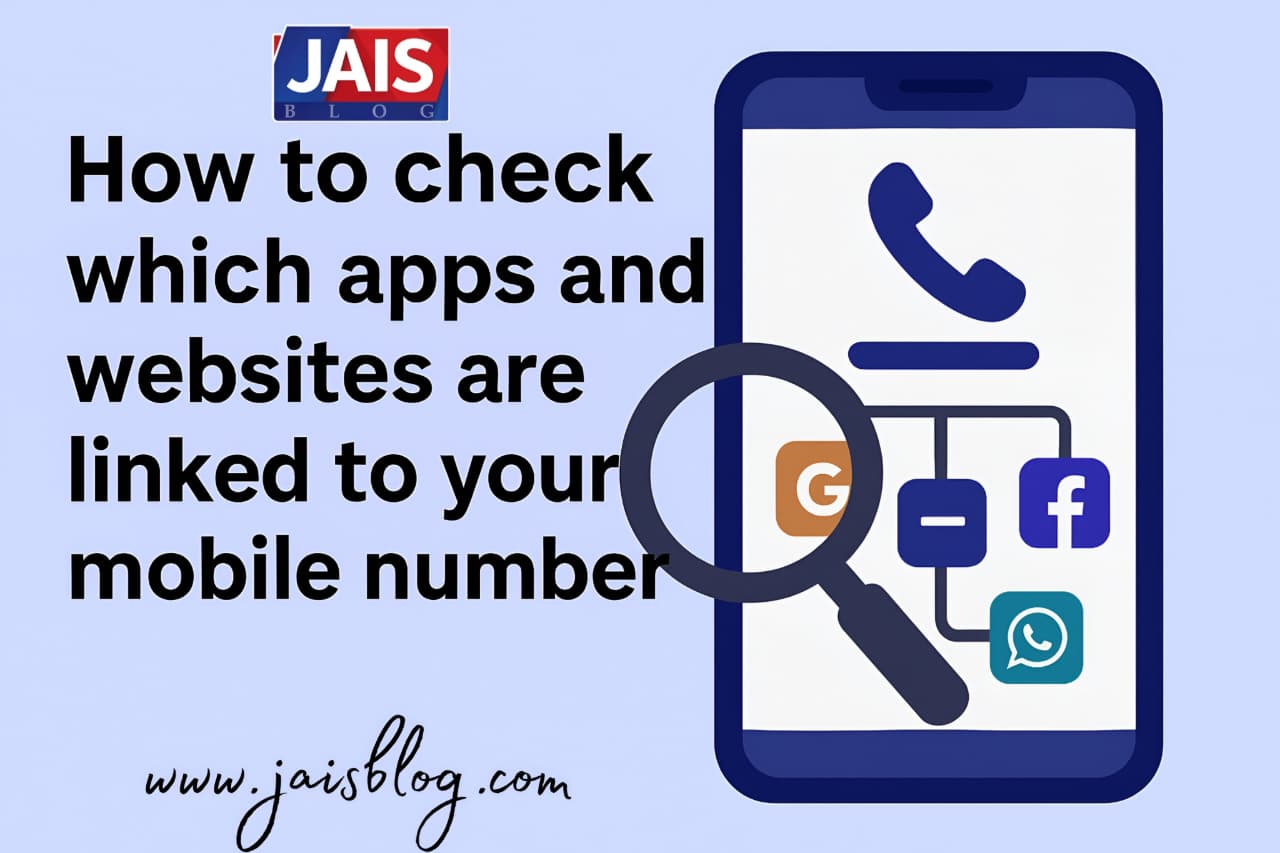Our mobile numbers have evolved into digital fingerprints in today’s digital world, serving as more than just contact details. We use them to recover passwords, authenticate identities, sign up for apps, and get critical notifications. However, it’s simple to forget which websites, apps, and services are associated with your mobile number over time.
What would happen, then, if you wanted to improve your digital footprint, lower spam, or strengthen your security? Discover where your mobile number is connected and how to regain control with this step-by-step guide.
📲 Why It Matters
Let’s examine some reasons why you might want to do this before getting started:
- Security: The likelihood of identity theft and data breaches increases with the number of platforms that have your number.
- Privacy: Businesses frequently sell your number to outside parties or use it for targeted advertisements.
- Spam: Have you ever wondered why you keep receiving odd texts or robocalls?
- Account Recovery: You may lose out on crucial notifications or password resets if your phone number is connected to outdated or inactive accounts.
🔐 How to Determine Which Websites and Apps Have Your Mobile Number
Check Your Email Inbox
Most platforms send you a confirmation email when you sign up with your phone number. Look for terms like these in your inbox:
► “Verification of phone number”
► “OTP”
► “mobile number linked”
► “Your number was added.”
► “two-factor authentication”
This could reveal previously unnoticed accounts.
Make use of the “Sign in with Phone Number” feature.
Try the “Forgot Password” or “Sign in with Phone Number” options on well-known apps and websites. They will usually confirm with a message or prompt if your number is registered.
Start with: Banks and Fintech Apps, Google, Facebook, Instagram, Twitter (X), WhatsApp, Telegram, TikTok, Amazon, Microsoft, PayPal
Check Google Account Activity
Your Google account can be useful if you use Google services or an Android device:
- Go to: https://myaccount.google.com/
- Click on “Personal Info” and check under “Phone”
- Also check “Security” → “Your Devices” and “Third-party apps with account access”
This displays the services that are utilizing your phone number to recover your account or sign in.
Use Truecaller or Similar Services to Conduct a Search
Apps such as Truecaller (if available in your area) can display how other people perceive your number and which services might have detected or flagged it.
⚠️ Caution: Use trusted services only, as giving your number to unknown tools can backfire.
Mobile Carrier Services
Dashboards that display connected third-party services are provided by certain telecom providers. Go to the website or app of your carrier and look for a section similar to this:
“My Subscriptions”, “Linked Apps”, “Value-Added Services”
You can typically unsubscribe right away from services that seem questionable.
Examine the Messaging Apps
Open apps like:
- WhatsApp → Settings → Tap your name to view the linked number
- Telegram → Settings → Privacy → Phone Number
- Signal or Viber → Check your registered number and linked devices
Additionally, check the settings for third-party integrations or linked accounts.
🧹 What to Do Once You Know
After determining which services are associated with your number:
✅ Keep:
⦿ Accounts you actively use
⦿ Services that use the number for essential notifications or two-factor authentication
❌ Remove:
⦿ Unused or outdated accounts
⦿ Apps with a reputation for selling user data
⦿ Untrustworthy or unscrupulous services
🛡️ Strengthen:
⦿ For non-essential signups, use a virtual number (like Google Voice).
⦿ Whenever feasible, enable two-factor authentication (2FA).
⦿ Don’t enter giveaways, sweepstakes, or dubious websites with your actual number.
🔚 Final Thoughts
Like your email address or password, your mobile number is an important component of your online persona. Reviewing which websites and apps have access to it on a regular basis is a great habit that can increase digital security, decrease spam, and improve privacy.

